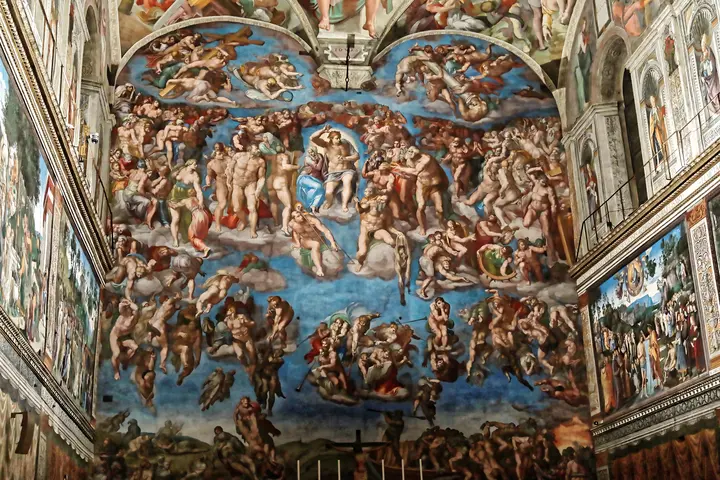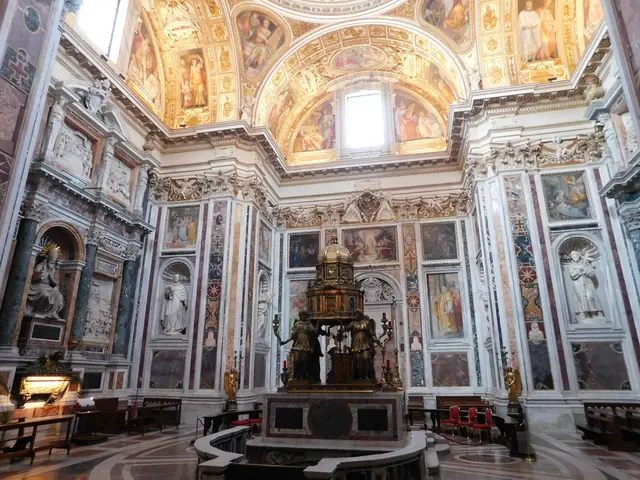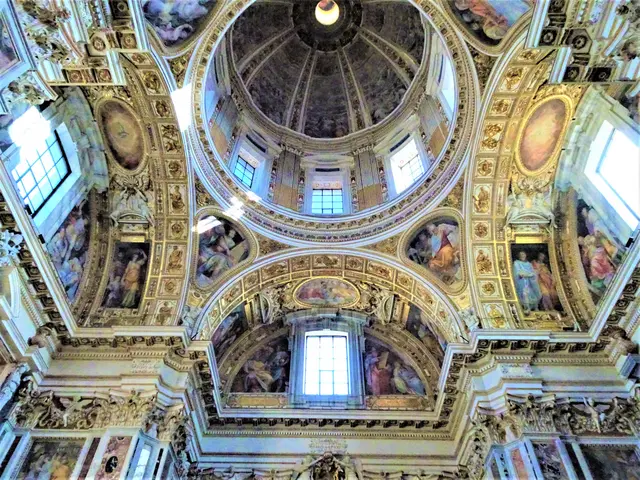Sistine Chapel
Introduction
The Sistine Chapel is one of Rome’s most celebrated treasures, admired by millions for its astonishing frescoes and rich history. Whether you’re drawn by Michelangelo’s artistry, its role in papal elections, or centuries-old rituals, the chapel invites us into a living story of faith, power, and creativity. Every visit reveals layers of tradition that still shape Rome’s identity today.
Advertisement
Historic Highlights
🏛️ Building the Sistine Chapel
The Sistine Chapel, standing where the medieval Cappella Magna once rose, began its journey in 1477 under Pope Sixtus IV. This Roman monument was carefully constructed atop the earlier chapel’s walls, combining old stones with new Renaissance ambition. The plain exterior hid a grand interior designed for the Pope’s most important ceremonies, echoing the fortress-like needs of the Apostolic Palace.
“The Chapel was built retaining the medieval walls, reinforced and ennobled by the new work.”
— Daniels, 2018
🎨 Early Artistic Masterpieces
Inside, the chapel came alive with frescoes by great artists such as Botticelli, Perugino, Ghirlandaio, and Rosselli. The walls narrate the stories of Moses and Christ, connecting biblical history with the papacy. At the time, the starry blue ceiling echoed heaven. Perugino’s powerful scene—Christ Giving the Keys to St. Peter—highlights papal authority right where decisions shaping the church were made.
🖌️ Michelangelo’s Renaissance Revolution
In 1508, Michelangelo was reluctantly persuaded to paint the vast ceiling, transforming this triumphal arch of faith into a new summit of Italian art. For four years he toiled, painting figures from Genesis, prophets, and sibyls—sometimes standing upright for hours, paint dripping onto his face. When the ceiling was unveiled in 1512, it astonished the world.
“I’ve grown a goiter from this torture... my beard points to heaven.”
— Michelangelo, personal sonnet
🎭 The Last Judgment and Later Legends
Michelangelo returned decades later to create The Last Judgment (1536–41). Depicting the drama of salvation and damnation, he hid subtle jokes and self-portraits—such as painting a papal critic as a tormented judge in hell. Some found the nudes shocking, prompting later censorship. These stories, passed down by local guides, reveal the chapel as a place where history and Rome’s good-humored spirit entwine.
🛡️ Preservation and Modern Marvels
Today, the Sistine Chapel is fiercely protected, with cutting-edge climate control and careful restoration bringing Michelangelo’s colors back to life. Nearly six million visitors make a pilgrimage each year, supporting local jobs and global admiration alike.
💡 Visitor Tip
Visit early or late in the day for a quieter moment under the frescoes. Let your eyes wander upward and sense the centuries of prayer and artistry above you.
Timeline & Context
Historical Timeline
- 1477 – Pope Sixtus IV begins rebuilding the medieval chapel.
- 1481–1482 – Florentine and Umbrian painters create narrative frescoes.
- 1483 – Official consecration on August 15 by Sixtus IV.
- 1508–1512 – Michelangelo paints the ceiling frescoes.
- 1515–1516 – Raphael’s tapestries designed for the lower walls.
- 1536–1541 – Michelangelo paints The Last Judgment on the altar wall.
- 1564 – Posthumous censorship: explicit nudes covered by Daniele da Volterra.
- 1878–present – Papal conclaves held in the Sistine Chapel.
- 1980–1994 – Major restoration and cleaning of frescoes.
- 2014 – New climate control and advanced LED lighting installed.
Architectural and Artistic Vision
The Sistine Chapel’s structure reflects the Renaissance desire to harmonize biblical tradition and papal power. Retaining parts of the medieval Cappella Magna, the rebuilt chapel's proportions allude to Solomon’s Temple while serving practical needs—security and privacy for papal rituals. From the start, Sixtus IV saw architecture and art as intertwined tools of spiritual and political renewal. His investment in leading artists created a template for future popes, blending religious, familial, and civic ambitions on the walls of this inner sanctum.
From Renaissance Patronage to High Art
The early frescoes, by Botticelli, Ghirlandaio, Perugino, and others, mapped out a visual argument for papal succession. These twin cycles of Moses and Christ dramatized the roots of papal authority, reinforcing Sixtus IV’s claim to continuity with biblical leadership. Later, Michelangelo’s ceiling and Last Judgment pushed the idiom of religious art into new, astonishing realms. His freedom to reinterpret the space—transforming a simple starry sky into an epic of creation and fall—signals a shift to Renaissance humanism, where the body, emotion, and narrative drama take center stage. The chapel thus stands as a bridge from medieval decorative policy to the daring, expressive art of the 16th century.
Ceremony, Ritual, and Local Identity
Beyond its artistic fame, the Sistine Chapel is a nucleus of living tradition. For five centuries, it has hosted major liturgical events, most notably the papal conclave, where the election of each new pope is cloaked in ceremony and secrecy. The world’s gaze, from the first plumes of smoke to the joyous crowd in St. Peter’s Square, focuses on this vibrant room. Accounts of local Romans recall rare opportunities to join Holy Week services, where sacred music and the glow of candlelight cast the frescoes in moving relief. Such memories embed the chapel in both global Catholic culture and in Roman community life.
Conservation and Controversy
Efforts to safeguard the Sistine Chapel have mirrored evolving attitudes about heritage conservation. The late 20th-century restoration—using science to peel back grime and reveal Michelangelo’s rich palette—stirred global debate about the artist’s true intent and how we encounter the past. Innovations in environmental controls respond to towering visitor numbers, balancing access with responsibility. The reliance on international funding, from corporate sponsors to UNESCO experts, underscores a new chapter in Rome’s stewardship: one where global interest and local expertise must collaborate to defend a legacy against time and modern stressors.
Comparative Context
Compared with the earlier Niccoline Chapel and later Pauline Chapel, the Sistine Chapel exemplifies a phase where art, ritual, and papal ambition converged at unprecedented scale. While the Niccoline provided a private, intimate devotional space, and the Pauline reflected the Counter-Reformation’s focus on clarity and discipline, the Sistine Chapel remains unrivaled in marrying grand architecture, artistic innovation, and living ritual. Its ongoing role in religious identity, heritage economics, and the cultural imagination epitomizes Rome’s status as a continuous crossroads of faith and creativity.


